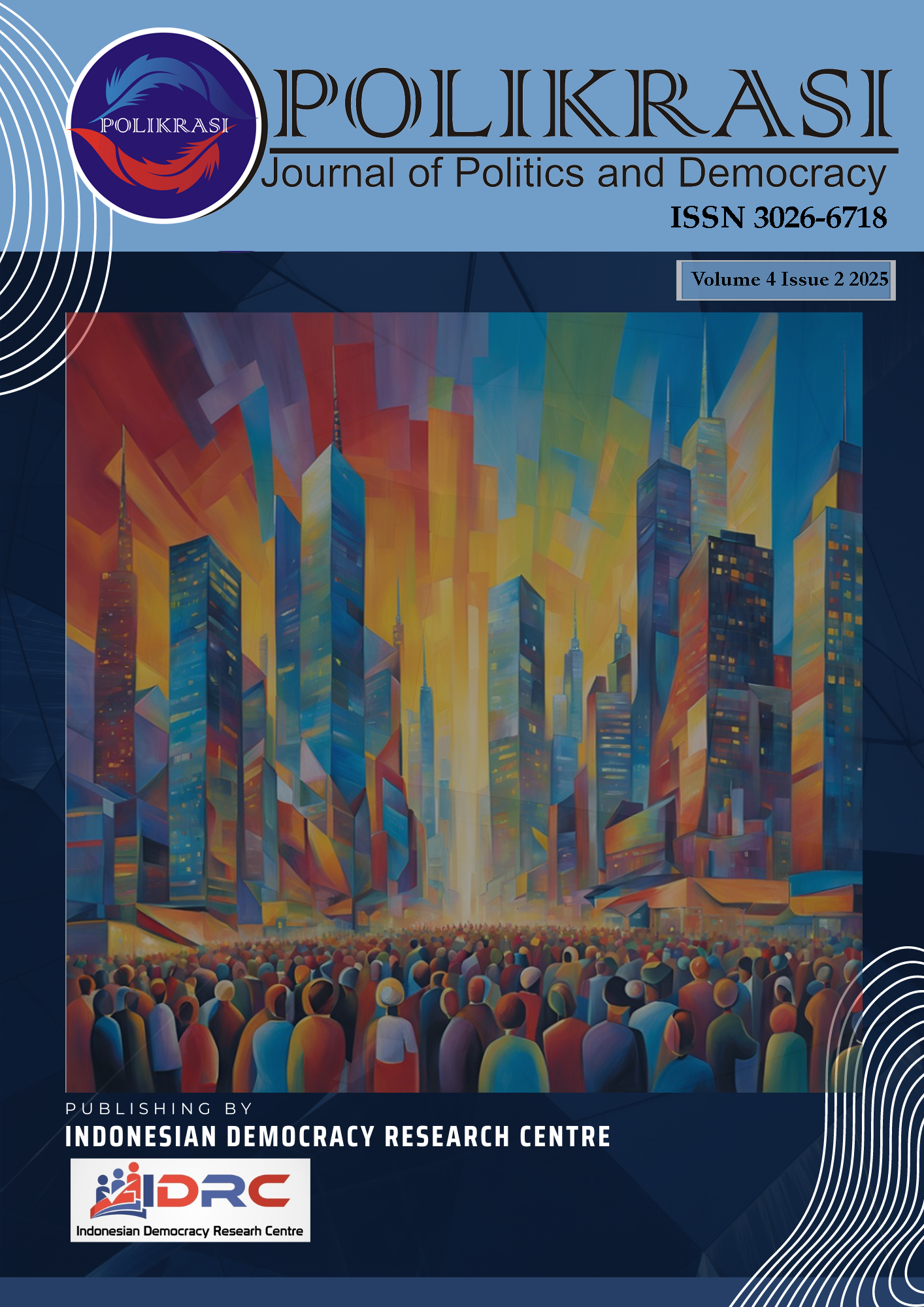The Coalition Patterns of Political Parties in the Nomination of Regional Head Candidates in Toba Regency in 2024
Pola Koalisi Partai Politik Dalam Penetapan Calon Kepala Daerah Kabupaten Toba Tahun 2024
Abstract
This study aims to analyze the coalition and non-coalition patterns that emerged in the 2024 Toba Regency Regional Election, focusing on the strategies employed by political parties in nominating candidates for regional head. Coalition and non-coalition political parties at the local level are crucial elements in determining the outcomes of the election, as structural factors such as legislative seat numbers, local voters, and the electability of candidate figures also influence the contest dynamics. Using a qualitative approach, this study examines how coalition formation or the decision to remain non-coalition is influenced by local political and social factors, as well as party strategies in responding to the new nomination threshold regulation set by the Constitutional Court. The results of this study indicate that in the 2024 Toba Regency Regional Election, large coalitions formed by major parties emphasize electoral efficiency based on seat calculations, while smaller coalitions focus more on shared social visions and change. Additionally, the non-coalition strategy adopted by the Nasdem Party illustrates the application of Rational Choice Theory, where the decision to run independently was driven by the electoral calculation and the strength of the candidate's figure. This study provides new insights into the development of coalition theory at the local level and how local factors influence the formation of electoral strategies in regional elections.
Keywords:
Chaallenges, Government, Health ServicesDownloads
References
How to Cite
Published
Issue
Section
License
Copyright (c) 2025 Yulita Sitorus, Ian Pasaribu, Revi Jeane Putri, Dori Efendi

This work is licensed under a Creative Commons Attribution-NonCommercial-ShareAlike 4.0 International License.
- Authors retain copyright and grant the journal right of first publication with the work simultaneously licensed under a Creative Commons Atribusi-Non Commercial-Share Alike (CC BY-NC-SA).
- Authors are able to enter into separate, additional contractual arrangements for the non-exclusive distribution of the journal's published version of the work (e.g., post it to an institutional repository or publish it in a book), with an acknowledgement of its initial publication in this journal.
- Every publication (printed/electronic) are open access for educational purposes, research, and library. Other than the aims mentioned above, the editorial board is not responsible for copyright violation.













